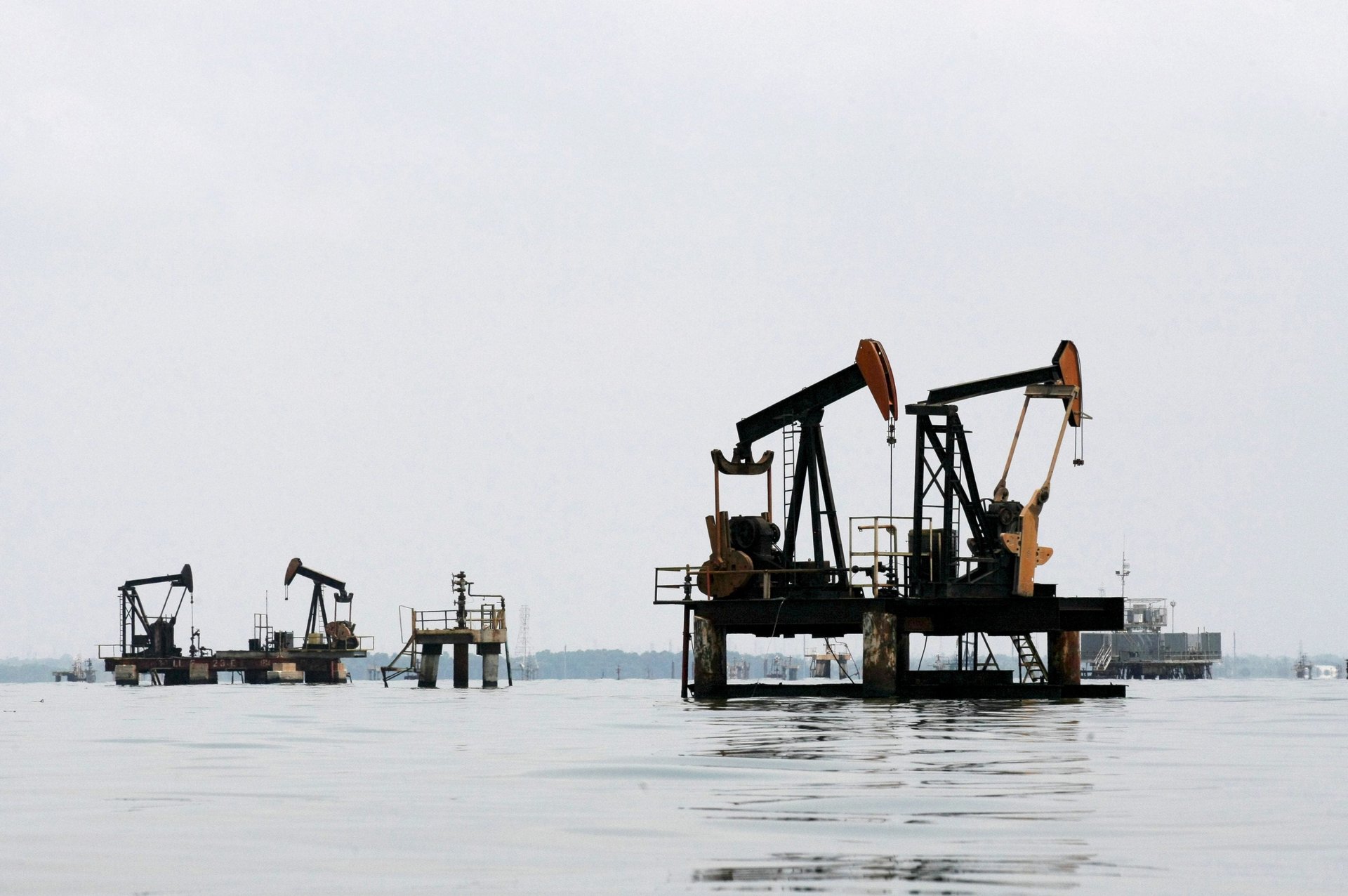The once-mighty OPEC cartel is struggling to show that it still matters
Traders momentarily pushed oil prices back over $50 a barrel this morning (June 2), betting that OPEC, currently meeting in Vienna, would dispel the growing belief that the once-mighty cartel has become largely irrelevant. But then OPEC did the usual–failing to vote for joint action–and returned to its deathbed, sending prices again below $49 a barrel.


Traders momentarily pushed oil prices back over $50 a barrel this morning (June 2), betting that OPEC, currently meeting in Vienna, would dispel the growing belief that the once-mighty cartel has become largely irrelevant. But then OPEC did the usual–failing to vote for joint action–and returned to its deathbed, sending prices again below $49 a barrel.
OPEC held its twice-yearly meeting today amid another attempt to restore order in the group. For most of the time since the 1970s, the cartel has driven fear and dread around the world with its power to push up oil prices. But it’s been in disarray since June 2014, when cartel leader Saudi Arabia decided to declare war on upstart US shale producers, which came seemingly out of nowhere to add almost 5 million barrels of oil a day to the global market.
The Saudis have so far ended up reducing, but not crippling, American production, their intended target, while delivering an unintended blow to OPEC itself. The cartel’s weakest members are suffering from lower oil revenues, and the cohesiveness of the once-mighty group is now in question.
While oil prices are up some 48% from their February lows—Brent crude, the international benchmark, rose as high as $50.30 a barrel today, before falling after the OPEC meeting—they are well down from their $100-a-barrel highs before the Saudi-led price war.
Because of the hit to petro-state income, RBC Capital, in a May 31 note to clients, called 2016 “the year of reckoning” for OPEC’s weakest members, with Venezuela and Nigeria in the most trouble. Venezuela is experiencing serious food and electricity shortages, and president Nicolás Maduro’s continued rule is threatened. In Nigeria, attacks by invigorated militants have idled more than a third of the country’s oil production.
In the US, some 130 US oil companies have been forced into bankruptcy, and around 1 million barrels a day of shale oil is off the market. Yet American production is still up by some 3.5 million barrels day from 2011, as drillers find efficiencies or simply keep pumping.
What happens now?
After presiding over so much pain, Saudi Arabia was reportedly prepared to support a cap on OPEC production at about 32.5 million barrels a day, the cartel’s approximate current output. But its regional rival, Iran, wasn’t playing along, at least for now. Tehran is just getting its production back up after the lifting of sanctions in January and, in a fierce battle for market share with the Saudis, it is cautious about agreements that could restrict its revival. In their meeting, OPEC members elected a new secretary-general, but failed to agree to limit production.
In a note to clients, Citi said that supply disruptions around the world have removed 4 million barrels a day of production from the market. It expects some 2.6 million barrels to remain off the market as long as oil prices remain relatively low. These lost barrels are a primary force tightening supply, and promising much firmer oil prices going forward, the bank said. In addition, demand may be higher than expected, thus tightening the market even more, says PwC Energy’s Reid Morrison.
But working against this scenario is rising supply elsewhere. Defying projections of a much longer ramp-up in output, Iranian production is up by some 800,000 barrels a day since sanctions were lifted, to almost 3.8 million. Iranian oil minister Bijan Zanganeh says he expects production to reach 4 million barrels a day before long. In addition, Saudi production remains high, at about 10.2 million barrels a day, and Russia’s current output is an even bigger 10.9 million barrels a day.
Sebastien Marlier of the Economist Intelligence Unit says “the worst is over,” but that oil prices have “moved ahead of fundamentals,” including the supply surge from Iran. He believes that prices could slip into the low $40s and even the high $30s per barrel.
This story was updated at 10am ET with OPEC’s failure to agree on a production cap.